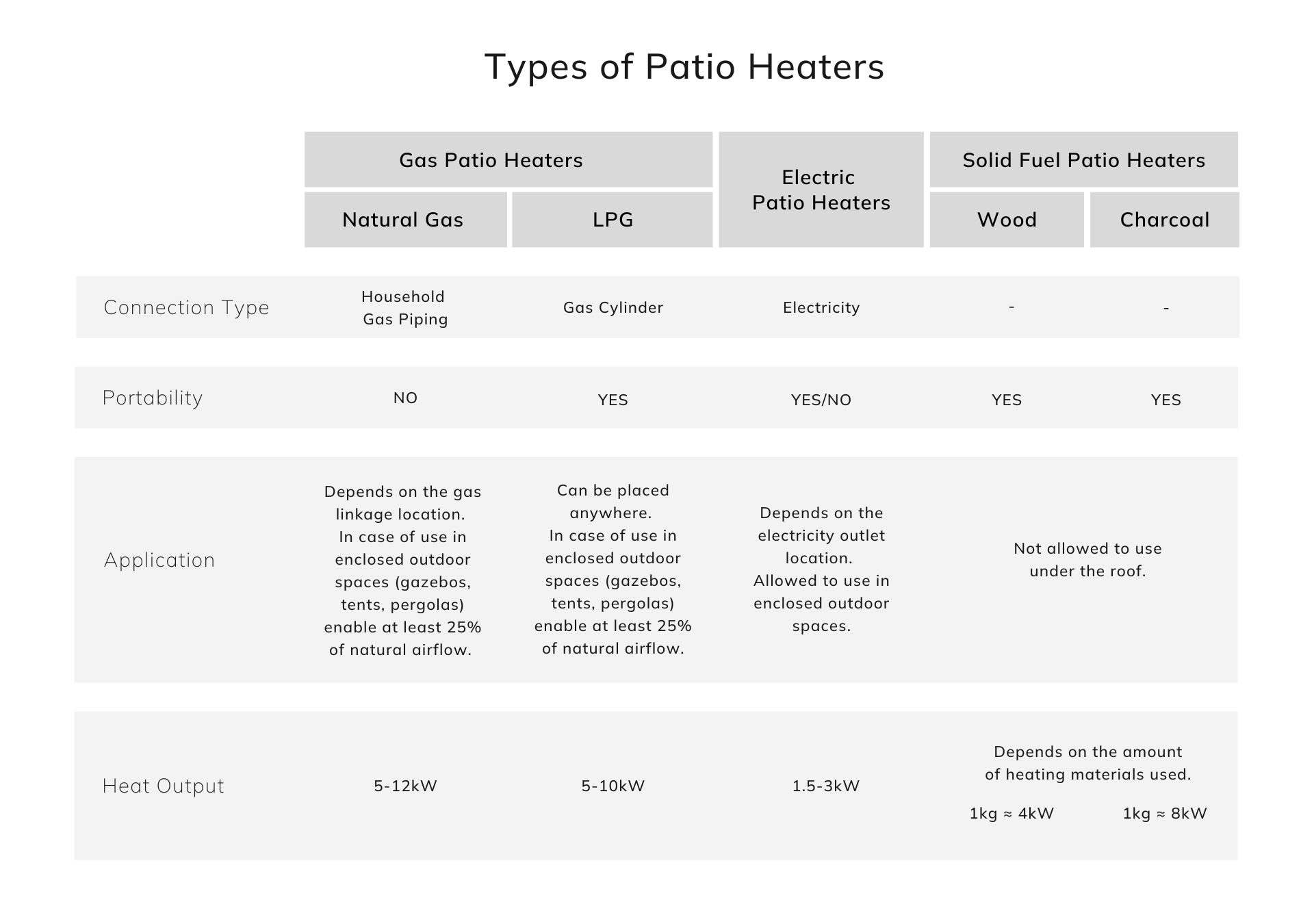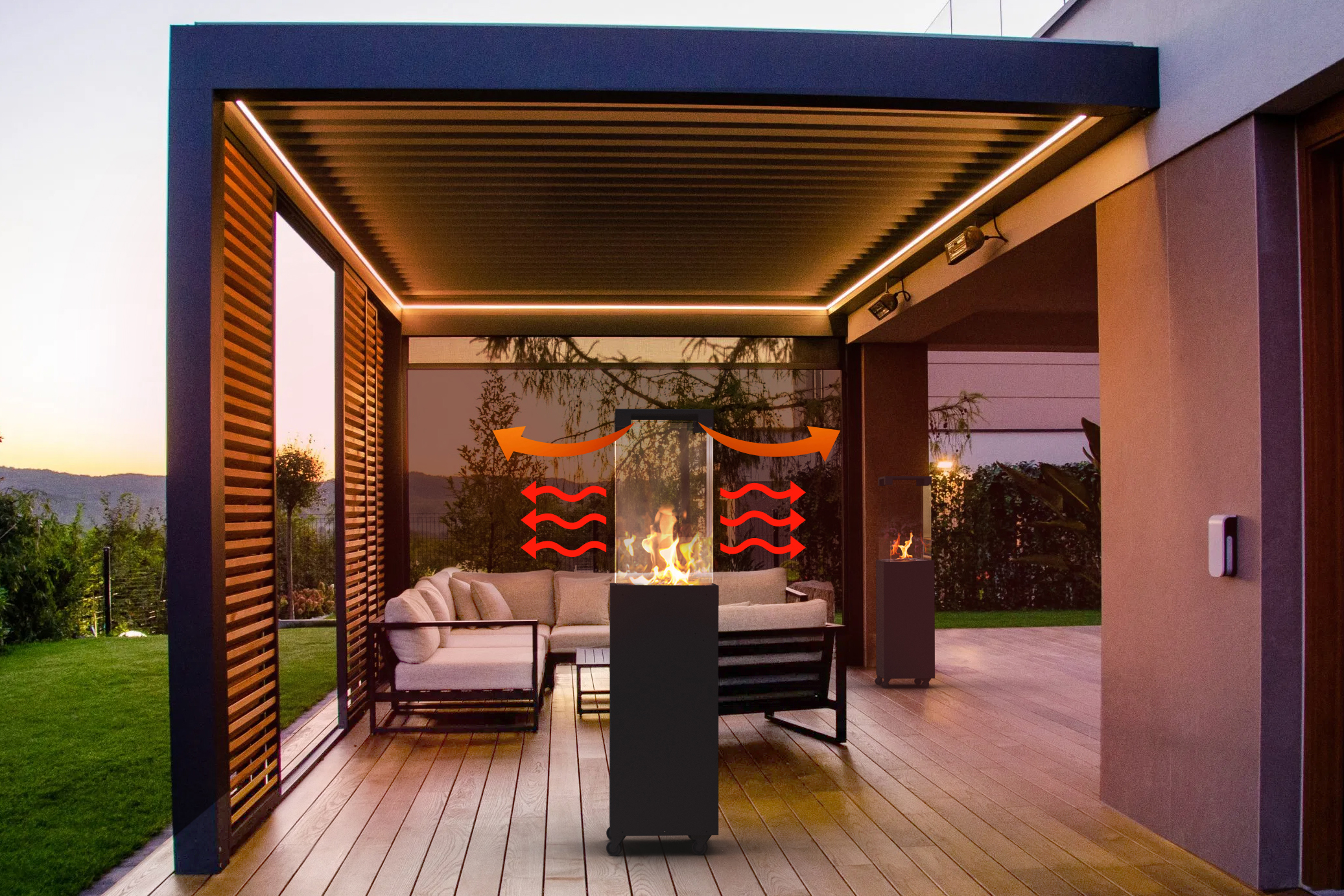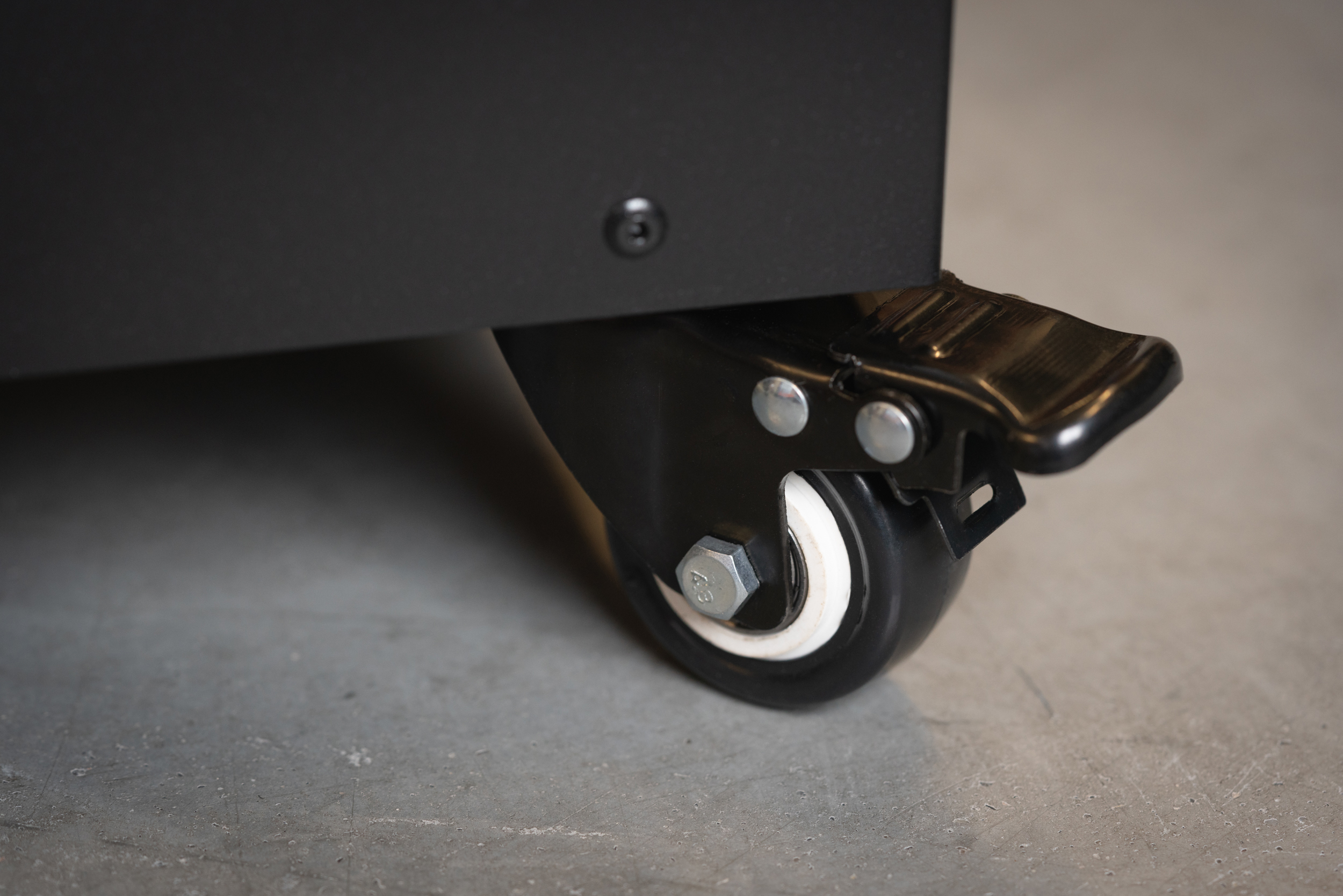What you need to know before buying a gas patio heater?
From different shapes and sizes to various kinds of power supply, to different applications – patio heaters can create an outstanding ambiance in outdoor spaces. Especially in the spring and summer season, these products can be seen in private patios or outside restaurants. However, to enjoy the flame in your outside space as soon as the products arrives, read most asked questions about patio heaters.
What is a patio heater
A patio heater is an outdoor heating device that depending on the power supply can raise the temperature in an outdoor roofed space from 5 to 15 degrees in any given direction.
Best known for the warmth they emit but also for their eye-catching design, patio heaters serve to extend the time spent outdoors.
What kind of patio heaters can we distinguish?
Depending on the fuel type we can distinguish the following types of patio heaters:
1) Gas Patio Heaters
This group of patio heaters has been recently extremely popular due to their powerful heat output. We can distinguish either natural gas or LPG patio heaters that use an open flame to generate pleasant heat.
Natural Gas Patio Heaters
This type of outdoor patio heater is quite popular among buyers due to its low running costs. Very efficient in heating, it can provide up to 12kW of heat. However, if your terrace is not already equipped with natural gas, then hiring a specialist will be a must here. With the constant access to gas, you will not have to worry about filling up the gas tank.
Propane Patio Heaters
Highly functional patio heaters because of their portability feature. With built-in castors and a gas tank compartment, you can place an outdoor propane heater in any desired space. Because propane patio heaters use bottled LPG gas they don’t require either electricity or fixed gas connections. While they can also be powered with a butane gas cylinder, propane is usually the most common option because of its lower boiling point. Propane heaters can be successfully used in large roofed areas with well-ventilation provided.
2) Electric Patio Heaters
These Plug&Play outdoor fireplaces are simple to use and don’t require a professional installation. Here we can distinguish between infrared and halogen electric patio heaters. Halogen heaters produce fierce heat but give an unaesthetic red glow. Infrared is on the other hand much more efficient and produces a mild heatwave with no unwanted light emissions. Unlike the earlier mentioned gas heaters, electric heaters do not require ventilation
Except for free-standing units, we can also distinguish between wall or ceiling-mounted options. While the ease of use is widely appreciated, electric patio heaters take a while to warm up and produce much less heat than their “gas competitors”.
3) Solid Fuel Patio Heaters
Here we can distinguish units powered with wood pellets, logs, or charcoal. While these heaters emit a considerable amount of heat felt over a large radius, you will need to collect and store heating resources. However, solid fuel patio heaters are not the best option for those who crave instant warmth as they take longer to warm up and require regular feeding. It is worth mentioning that solid fuels are gradually being banned in many countries, it is better to make sure that such a ban doesn’t also apply to your country.

Which gas pressure regulator do I need for a patio heater?
Planika patio heaters come with the fitted gas pressure regulator depending on the country of use. They’re compatible with the most popular propane gas cylinder in the chosen country.
Does the gas patio heater provide heat?
Some gas patio heaters can be very heat-efficient and raise the temperature around the device by up to 15 degrees Celsius. However, the sensation of warmth depends on two important factors: heat output and type of heat transfer.
Heat output is the amount of heat that the device produces from combustion and is measured in kilowatts (or BTU when referred to the US).
Heat transfer refers to the direction in which the heat is flowing.
Gas patio heaters are capable of delivering between 5 to 12 kW of heat.
Most of the gas patio heaters available at the market use radiant heat that once reflected from the canopy is directed downwards. Planika gas patio heaters emit heat outwards in all directions in two ways. Through radiation – glass panels, when heated, emit heat to the surroundings, and through convection – the patio heater draws the cold air from the surrounding, heats it, and releases it through the hood to the surrounding. In Planika gas heaters the heat source is usually enclosed by glass panels on four sides and the heat is emitted evenly outward 360°, which is far more efficient. They are most effective when used in roofed outdoor areas such as tents, gazebos, or pergolas.

Are patio heaters easy to use?
Yes, Planika patio heaters come pre-assembled, you only need to install castors and finish with decorative elements and then connect the heater to the gas. The user-friendly control panel enables uncomplicated operation with just one knob.
How much does it cost to use a gas patio heater?
Planika gas patio heaters don’t require electricity and you don’t need to spend money on a qualified technician to assemble and connect the fireplace. Thus, the only cost you will need to cover is a gas cylinder which is widely available at petrol stations or building supply shops. Prices for an 11kg gas cylinder in Europe vary from 50 to 60EUR and can serve for up to 55 hours of fireplace operation at the lowest flame mode.

Can I use a gas patio heater indoors?
Planika gas heaters can be successfully used in covered outdoor spaces such as gazebos, tents, or pergolas. It is however crucial to provide the natural airflow – at least 25% of the space needs to be open.
Can a propane patio heater be used on a wooden deck?
A gas patio heater is safe to use on a wooden deck. While its upper part warms up during the operation, the lower remains cold and safe to be placed on decks.
Are all gas patio heaters portable?
Most patio heaters have castors that allow to easily move the device around the space and place them where desired. Additionally, castors can be locked to secure the patio heater from moving from sloping terrain. Some models can also be fixed to the surface. The installation process doesn’t require a complex conversion. To fix the patio heater to the surface, you only need to equip it with mounting anchors and install your device at the desired place.

Does the gas patio heater need to be covered when not used?
It is not required, however, a patio heater cover is useful when you want to keep your unit in good condition when not used. Planika's products linclude dedicated covers made from highly weather-resistant materials that can be used to protect the patio heater from rain and snow but also dust and dirt.
Using gas patio heater in various weather conditions
1) Can I use a gas patio heater when it is windy outside?
Patio heaters can be used in moderate winds. When the wind is heavy we recommend placing your unit in a sheltered space or stopping using it. In case of flame blowouts, the thermocouple will cut the gas supply and switch the appliance off. All Planika patio heaters are equipped with this thermal sensor.
2) Will my patio heater work in winter?
Yes, Planika gas patio heaters will be perfect to keep you cozy during winter evenings. If you are planning to use a gas patio heater when the temperature drops below -1⁰C make sure you choose the propane cylinder that can withstand up to -42⁰. In comparison, butane condenses at -1⁰C which makes it impossible to use the device.
3) Can I use a patio heater when it is raining?
While you can use Planika patio heaters when it is raining, we do not recommend leaving it when the rain is heavy. For longer exposition to rain you can equip your patio heater with a dedicated waterproof fabric cover. Gas patio heaters are designed to withstand water contact. Its base is galvanized and powder coated, making the patio heater highly resistant to corrosion.





